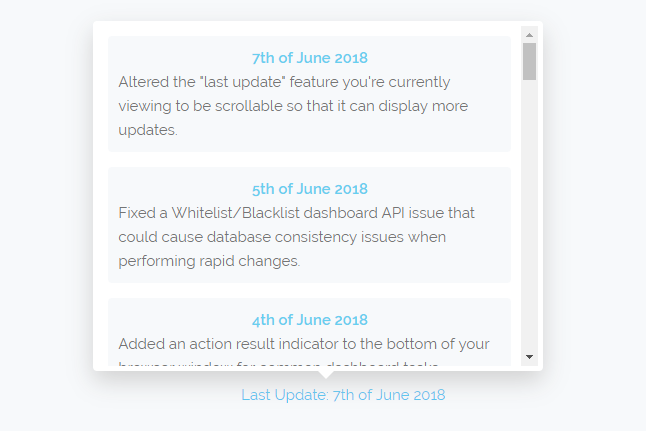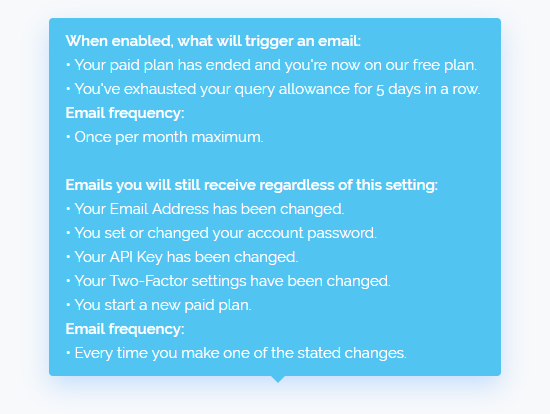Today the General Data Protection Regulation (GDPR) comes into force in Europe. If you've been receiving a torrent of emails recently with regards to the regulation you may be wondering why exactly we didn't send you one.
Well the simple answer is, we've been GDPR compliant for more than a year. When we first started we had a very clear and concise privacy policy which is easy to read and understand (part of the GDPR stipulations). And when you signed up for our service the only "opt-out" email correspondence we had in your Dashboard was to disable important account related emails.
All our promotional emails have always been opt-in meaning you had to tick some boxes in your dashboard to specifically allow us to send you any of those types of emails. Like shown below.

On top of this, we only ever accepted the bare minimum of personal information from our customers. You'll notice that when you signup or even pay for a paid plan with us we don't ask for your name or address. Nor do we ask for your telephone number, gender, age or other personal information. We simply don't need that information to facilitate offering our product and so we don't ask for it.
Our final piece of compliance and probably the most important to you, we don't mine or sell your data or the data you send us about your customers (their IP Addresses or the services you operate that they're visiting) we don't use any third parties for sub-processing the data you send us or to process the information we have about you. Anything you send us doesn't leave our servers to a third party under any circumstances. Since we don't play around with your data we've had no need to ask for your permission by email to do things with it.
Under the GDPR language we're whats known as a data-processor. Since we process data on your behalf about your users, specifically you send us their IP Addresses and we tell you if they're using a Proxy or VPN service.
It's very important that we do not keep your users personal IP Addresses, and we don't. We don't keep them in our (very sparse) server logs and we do not commit them to persistant storage. The IP Addresses that you send us which we determine are not running a Proxy Server or a VPN are only stored temporarily in server memory and are purged from that memory on average within 15 minutes of us receiving them.
On top of that we never store negative IP determinations with our customer identifiers (API Keys). Meaning once you've sent an IP Address to us, if we determine it's not a Proxy or VPN server it is unlinked from your API Key so that no correlation between you and them can be made by us or a third party (in the unlikely event our servers were compromised).
The very last thing to mention about our compliance is security auditing and our use of strong encryption. We are constantly auditing our processes and our code to identify weak points and all our code is created with security in mind from the very start, not afterwards.
We have to date never had any data breaches or leaks and we store all passwords using strong bcrypt encryption, our cluster offers strong TLS 1.2 connectivity to you for all your website interactions and API Calls while our server nodes always send and receive between each-other using TLS 1.2 transport encryption and AES 256 for the blocks of data actually being synced.
We know that many of you are probably unenthused by the GDPR by now mostly due to the constant emails you've received leading upto today. But it's important, for too long companies have been misusing peoples personal information and although there have been many different regulations by specific European countries this is the first time that there is one federal level regulation that has real penalties and is easily identifiable by users so that they know their rights and know when companies are not fulfilling their obligations.
You can read both our Privacy Policy and GDPR pages if you'd like, but we've covered the main points in the post above for you.
 Above is a screenshot showing the Dashboard's last update window which now displays 23 updates going back to October last year.
Above is a screenshot showing the Dashboard's last update window which now displays 23 updates going back to October last year.







